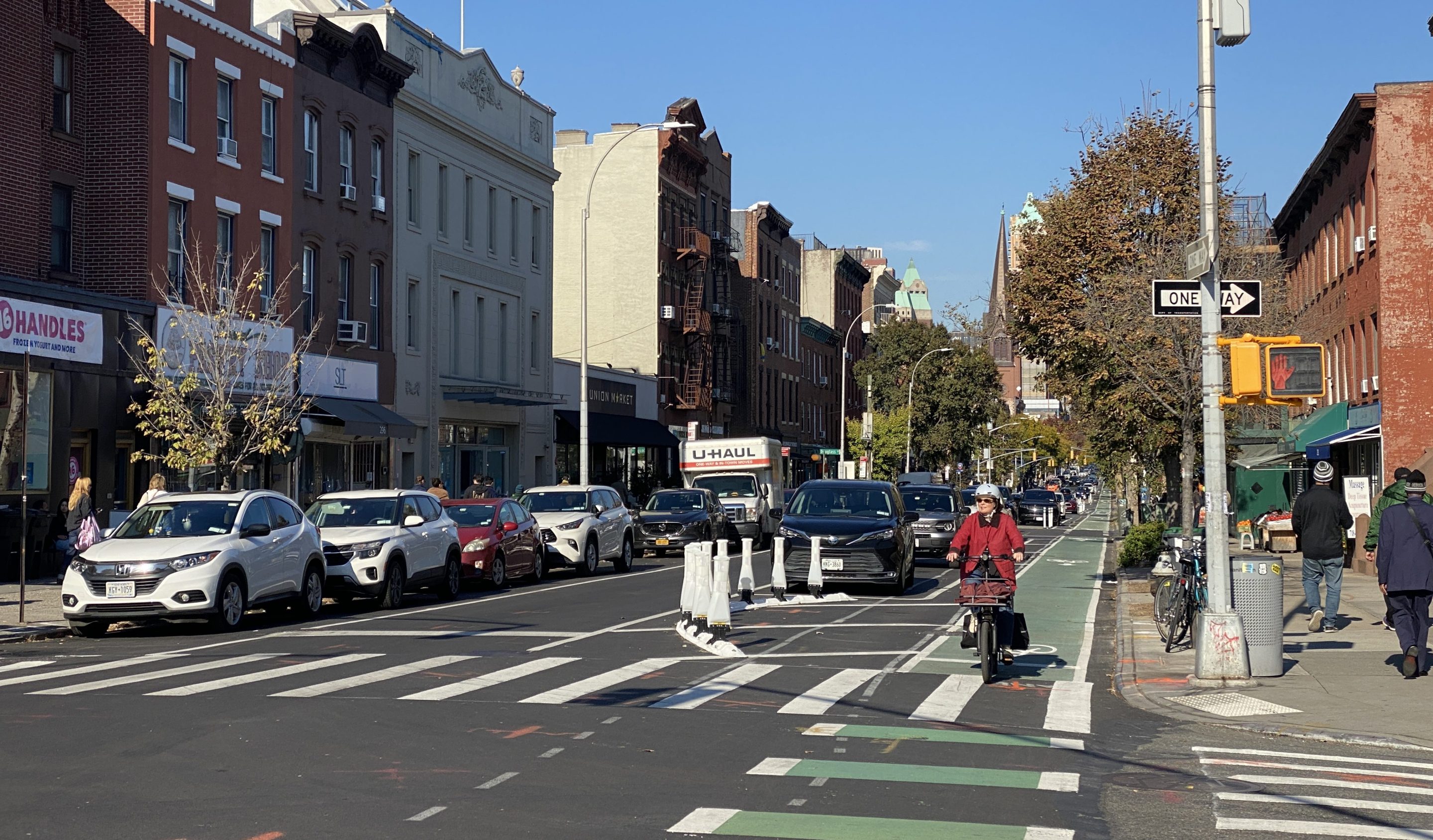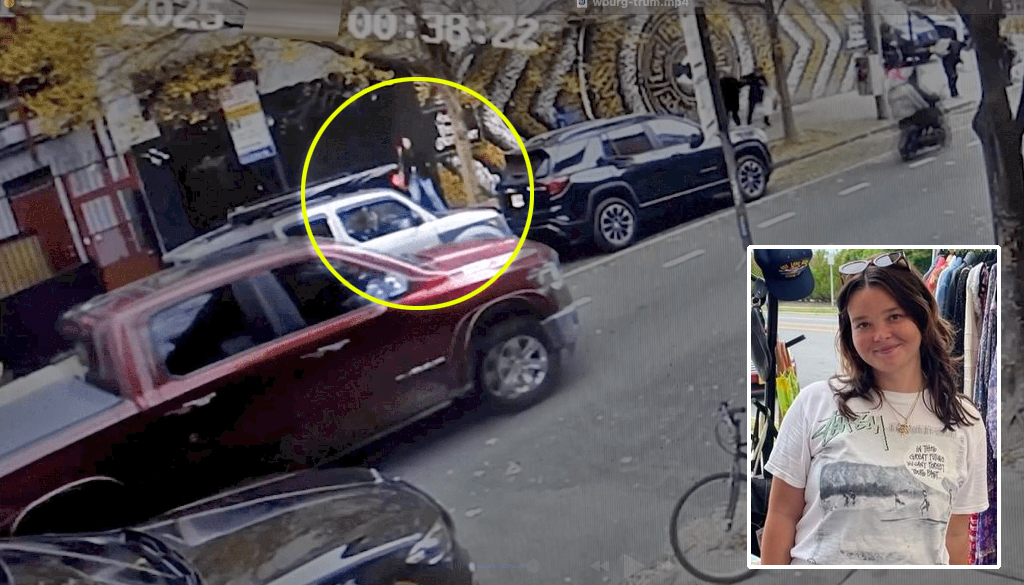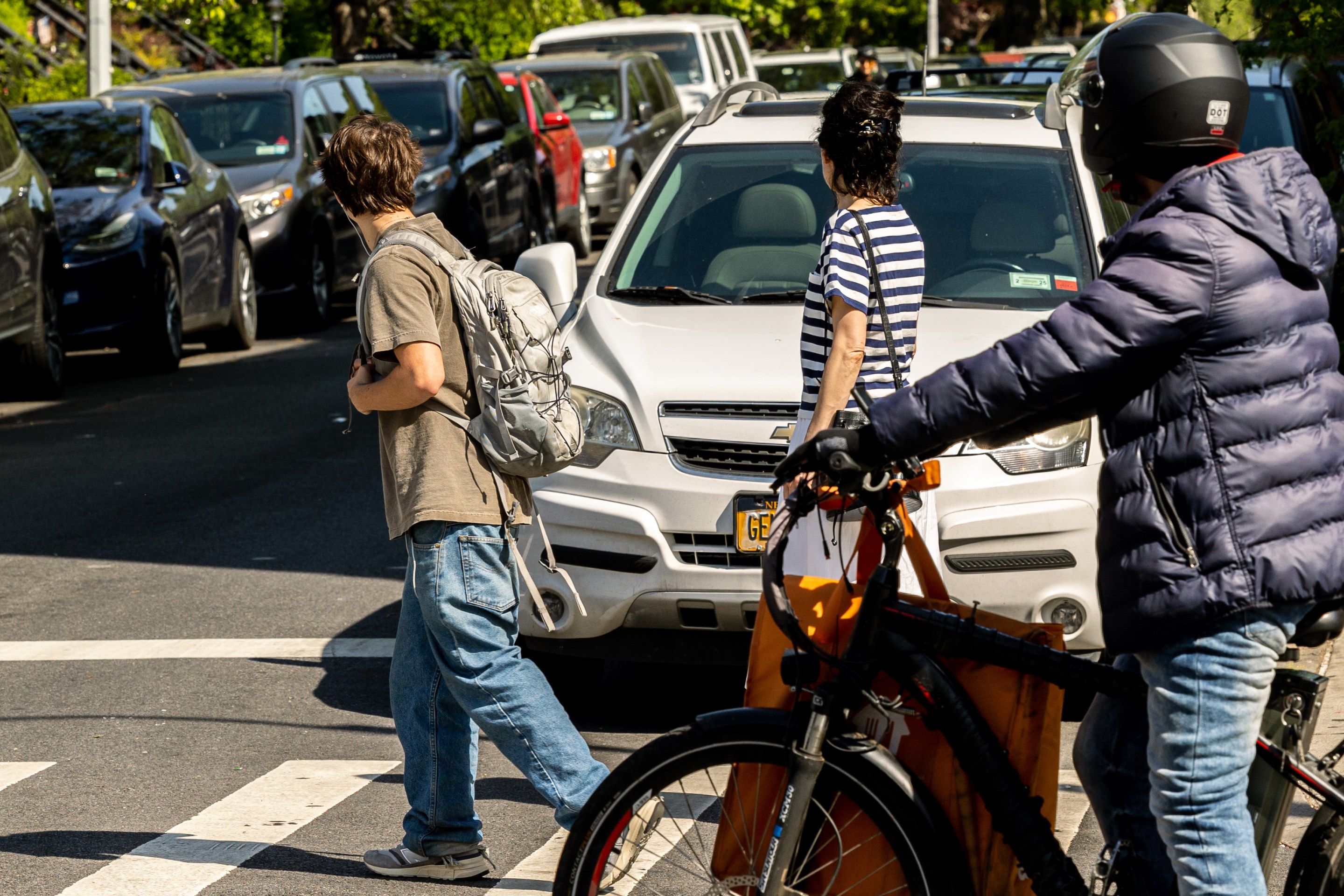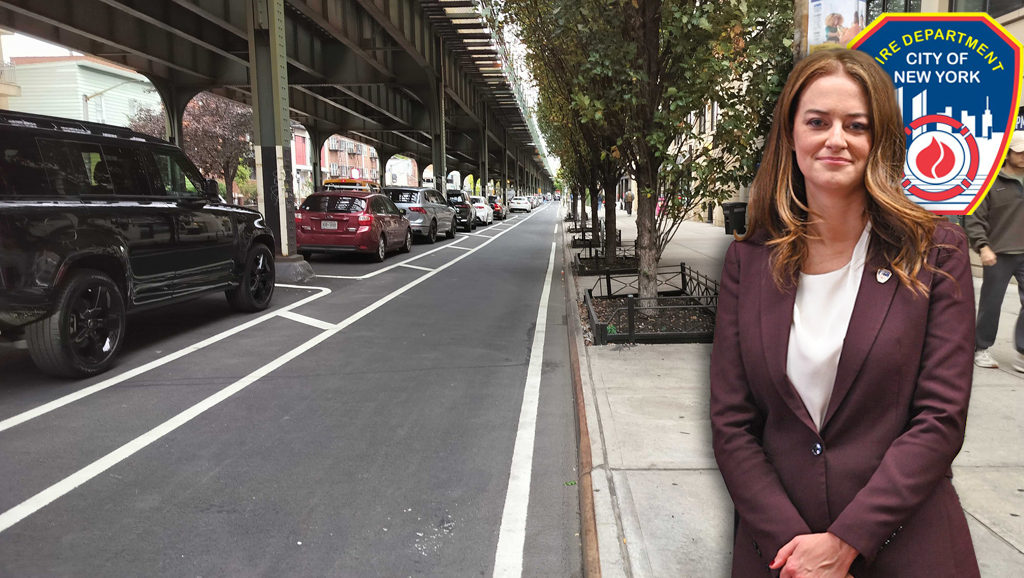The vast majority of people access Court Street on foot, transit or on a bike — and not, as many business owners think, by car — according to court testimony submitted by the Department of Transportation as it defends itself in a lawsuit seeking to remove the road's newly installed protected bike lane.
Merchants on the corridor sued DOT last month over the parking-protected bike lane on Court Street, arguing that reconfiguring the roadway from two southbound lanes to one to accommodate a bike lane would hurt their bottom lines. But the testimony again shows that reclaiming space from private automobiles is exactly what the city should be doing, advocates said.
"Walking and cycling are completely ingrained in how the neighborhood functions and nonetheless the argument is about cars," said Jon Orcutt, a former DOT policy chief under the Bloomberg and de Blasio administrations who now is the director of advocacy at Bike New York. "City government is almost having to prove to the people of the neighborhood that they live in a big city."
Nearly three-quarters of people DOT surveyed along the busy corridor last year got there on foot (73 percent), while 64 percent said they took the subway or bus, according to data the agency filed in court last week. (Numbers add up to more than 100 percent because people could choose multiple modes of transportation.)
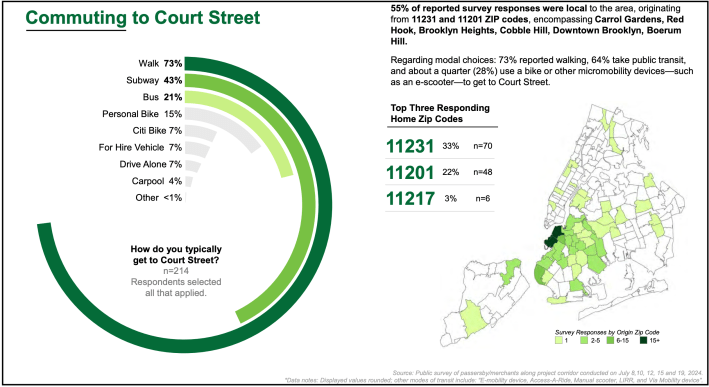
More than a fifth of respondents (22 percent) said they rode a bike or a Citi Bike to get to Court.
Only 7 percent drove alone to Court Street, while another 7 percent used for-hire vehicle services like Uber and Lyft, and 4 percent carpooled. That totals 18 percent of people getting to Court Street in cars – in other words, more people get to the street on two wheels than on four.
That's in line with the broader area, as 82 percent of residents in Brooklyn's Community District 6 commute by mass transit, walk or bike, according to Census data collected by Transportation Alternatives and the Massachusetts Institute of Technology.
There are three stops on the F and G subway lines that are parallel to Court Street one block over on Smith Street, and the B57 runs along Court Street itself.
"Obviously, [buses and subways] move a lot more people than the cars parked on the block," Orcutt said.
The 81-page survey, conducted in mid-July 2024, reveals DOT's extensive preparation last year ahead of its street improvement project. Beyond the mode share, the survey also revealed that 59 percent of respondents specifically asked DOT for a protected bike lane to address rampant speeding and illegal parking.
The proposal removed one of two travel lanes on Court Street and installed a parking-protected bike lane this summer and fall. The revamp also shortened crossing distances for pedestrians and improved sight lines by banning parking at crosswalks.
DOT collected the stats at a time when Court Street was still four lanes dedicated to the movement and storage of private vehicles, and the data back up assertions by locals who complained the road largely served as a "release valve" for the Brooklyn-Queens Expressway.
"Around here after 4 p.m., it all turns into bedlam," one person told DOT during its survey.
Another person described the previous status quo as a "free for all," and another complained about rampant double-parking.
"Double-parking is the absolute worst scourge of the entire city. If I were mayor tomorrow that would be my first focus," the person told the agency.
DOT said 196 business on Court Street between Tillary Street and Hamilton Avenue participated in its survey. (One business owner pointedly complained about double-parking ... because of all the city placard perps stealing curbside space.)
The primary goal of the project is to make Court Street safe. A whopping 155 people were injured between Jan. 1, 2020 and the end of 2024, and protected bike lanes reduce crash injuries by 15 percent overall, including 18 percent among pedestrians and 22 percent for senior pedestrians, according to DOT data.
"The redesign of Court Street follows the best safety practices from around the world and is similar to countless streets across New York City. Protected bike lanes have proven to improve safety for everyone on the road, while also helping support local businesses, and we look forward to defending the project in court," the agency wrote in its presentation to the local community board in June.
Nonetheless, the Court Street Merchants Association sued the city last month, claiming the redesign would hurt "all members of the Court Street community" by impeding deliveries, increasing risks to local kids, seniors and people with disabilities – and even obstruct access for church services and emergency vehicles.
Brooklyn Supreme Court Justice Inga O’Neale let the city finish the redesign of the bike lane, but plans to rule on the road's fate before the end of the year. The next hearing is on Monday, Nov. 24.
The Merchants Association did not respond to requests for comment.
